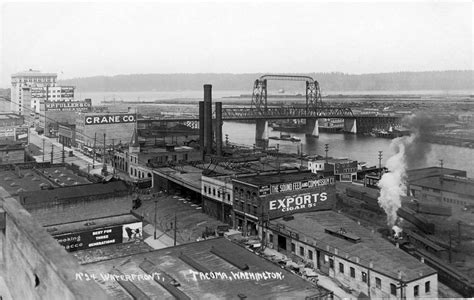If Dashiell Hammett, the man who invented the modern American detective novel, is associated with any city, it’s usually San Francisco, where he wrote most of his best-known works, including his breakout 1930 novel, The Maltese Falcon. But it may have been a brief stay in a Tacoma hospital that turned him into the writer he became.
Having grown up poor, Hammett was forced to work from the time he was a teenager. Eventually, he hooked up with the Pinkerton Detective Agency. His years in that line of work are generally considered the source of his street knowledge and private eye’s view. But it was his time being treated for tuberculosis in Tacoma in 1921 that wound up being the turning point in his life.

Not only did Hammett meet his future wife, Josephine (Jose) Dolan, during that hospital stay but also a character he called Whitey in his late, unfinished novel Tulip.
Whitey, he writes, was “a powerfully built squat blond Alaskan with most of the diseases known to man; he could hit like a pile driver, but his knucklebones would crumble like soda crackers.” The muscular Alaskan, Hammett notes, would borrow a blackjack from him and give it back the next morning “with ten bucks.”
According to biographer Diane Johnson, “the wild Whitey fascinated Hammett.” Coinciding with Hammett’s realization, at 27, that he might well die without having done “what he knew he could do,” their time together convinced him that “you could fight death or at least not lie down before it. You could live your life and keep on your feet, and in particular drink whiskey.” Which is a pretty good description of how Sam Spade sees life.
Whitey’s hard-boiled approach is summed up in an anecdote Hammett tells in Tulip: “I read in the afternoon paper about a man being slugged and robbed of a hundred and eighty dollars on the Puyallup Road–it ran from Tacoma to Seattle–the night before. I showed it to Whitey, who said people who were robbed always exaggerated the amounts.”

Within a year of leaving the Tacoma hospital and marrying Jose in San Francisco in July 1921, Hammett had published the first of the stories and then novels that would move literary sleuths beyond the cerebral passivity of Sherlock Holmes.
From the start, Hammet’s work has been praised for its gritty realism. His time with Pinkerton certainly played a role in that. But it just might have been those days of thinking about death while palling around with a bruiser named Whitey that gave the future crime-novel king a sense of life at its grittiest level.
(In another NW connection, Joel Cairo, the man who hires Spade to recover the statue in The Maltese Falcon, is supposedly based on someone Hammett arrested for forgery in Pasco, Washington, in 1920. Peter Lorre plays Cairo in John Huston’s 1941 film version.)
Note: A big thank you to historian Michael Sullivan for alerting me to Hammett’s time in Tacoma and his writings about it in Tulip. Be sure to visit Michael’s fascinating website, “Tacoma History,” with stories, links, and videos related to Tacoma’s past.
A few more links:
“How Dashiell Hammett Invented the Modern Crime Novel”–Pursuit Magazine
“Dashiell Hammett: Detective, Writer”–PBS “American Masters” series
“Tough Guy: The Mystery of Dashiell Hammett”–The New Yorker
“The Five Great Novels of Dashiell Hammett”–CrimeReads
I am an affiliate of Bookshop.org, where purchases support local bookstores. If you buy a book through a click on this website, I will earn a small commission that helps defray the costs of maintaining WritingtheNorthwest.com.

Leave a Reply